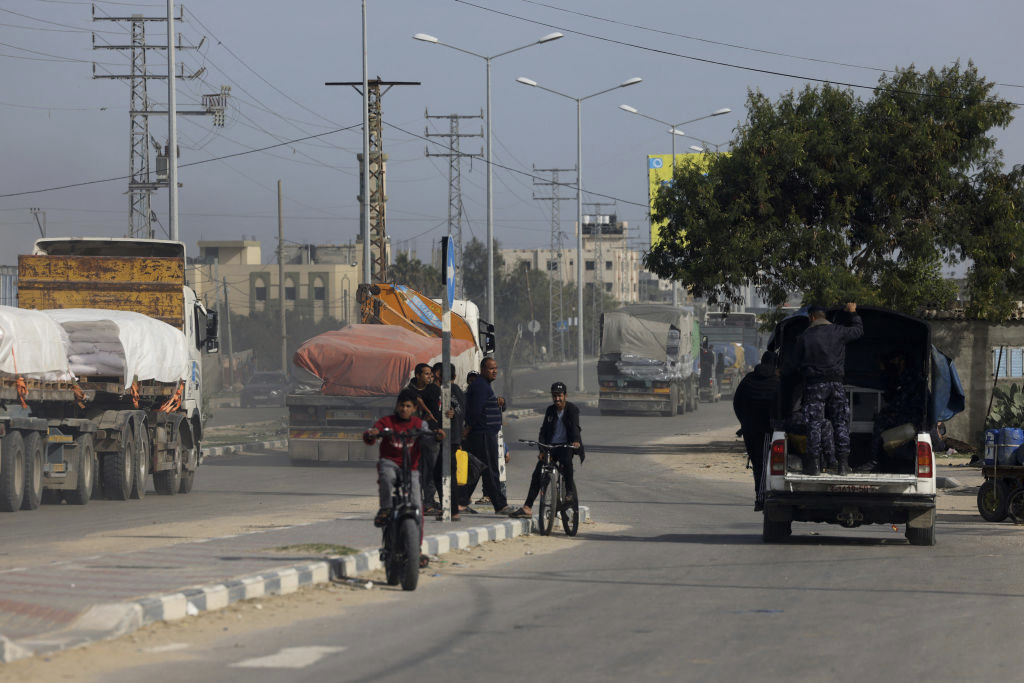| --> YouTube-Generated Transcript <-- |
| 0:13 | · | Though they died thousands of years ago, hundreds of bodies excavated in East Asia's Tarim |
| 0:18 | · | Basin look remarkably alive. |
| 0:22 | · | They retain the hairstyles, clothing, and accouterments of a long-past culture—one |
| 0:29 | · | that once seemed to suggest they were migrant Indo-Europeans who settled in what is now |
| 0:33 | · | China thousands of years ago. |
| 0:41 | · | But the mummies' seemingly perfect state of preservation wasn't their only surprise. |
| 0:47 | · | When modern DNA research revealed the preserved bodies were people indigenous to the Tarim |
| 0:52 | · | Basin—yet genetically distinct from other nearby populations—the Tarim Basin mummies |
| 0:58 | · | became even more enigmatic. |
| 1:04 | · | Today, researchers still ask questions about their cultural practices, their daily lives, |
| 1:14 | · | and their role in the spread of modern humanity across the globe. |
| 1:25 | · | Buried in a variety of cemeteries around the basin as long as 4,000 years ago, the naturally |
| 1:30 | · | mummified corpses were first unearthed by European explorers in the early 20th century. |
| 1:37 | · | Over time, more and more of the Tarim bodies were unearthed, along with their spectacular |
| 1:42 | · | cultural relics. |
| 1:49 | · | To date, hundreds have been found. |
| 1:51 | · | The earliest of the mummies date to about 2,100 B.C., while more recent mummies have |
| 1:55 | · | been dated to about 500 B.C. |
| 2:00 | · | At first, the mummies' Western-like attire and European-like appearance prompted hypotheses |
| 2:08 | · | that they were the remains of an Indo-European group of migrant people with roots in Europe, |
| 2:13 | · | perhaps related to Bronze-Age herders from Siberia or farmers in what is now Iran. |
| 2:19 | · | They had blond, brown, and red hair, and large noses, and wore bright, sometimes elaborate |
| 2:25 | · | clothing fashioned from wool, furs, or cowhide. |
| 2:29 | · | Some wore pointed, witch-like hats, and some of the clothing was made of felted or woven |
| 2:34 | · | cloth, suggesting ties to Western European culture. |
| 2:43 | · | Still others wore plaid reminiscent of the Celts—perhaps most notably one of the mummies |
| 2:48 | · | known as Chärchän Man, who stood over six feet tall, had red hair and a full beard, |
| 2:53 | · | and was buried over a thousand years ago in a tartan skirt. |
| 3:05 | · | Another of the most famous of the bodies is that of the so-called “Princess” or “Beauty” |
| 3:11 | · | of Xiaohe, a 3,800-year-old woman with light hair, high cheekbones, and long, still-preserved |
| 3:17 | · | eyelashes who seems to be smiling in death. |
| 3:21 | · | Though she wore a large felt hat fine clothing and even jewelry in death, it is unclear what |
| 3:27 | · | position she may have occupied in her society. |
| 3:31 | · | But the 2021 study of 13 of the mummies' ancient DNA led to the current consensus that |
| 3:36 | · | they belonged to an isolated group that lived throughout the now desert-like region during |
| 3:40 | · | the Bronze Age, adopting their neighbors' farming practices but remaining distinct in |
| 3:45 | · | culture and genetics. |
| 3:48 | · | Scientists concluded that the mummies were descendants of Ancient North Eurasians, a |
| 3:52 | · | relatively small group of ancient hunter-gatherers who migrated to Central Asia from West Asia |
| 3:58 | · | and who have genetic links to modern Europeans and Native Americans. |
| 4:07 | · | These bodies were not mummified intentionally as part of any burial ritual. |
| 4:11 | · | Rather, the dry, salty environment of the Tarim Basin—which contains the Taklamakan |
| 4:17 | · | Desert, one of the world's largest—allowed the bodies to decay slowly, and sometimes |
| 4:22 | · | minimally. |
| 4:23 | · | (The extreme winter cold of the area is also thought to have helped their preservation.) |
| 4:34 | · | Many bodies were interred in “boat-shaped wooden coffins covered with cattle hides and |
| 4:39 | · | marked by timber poles or oars,” according to researchers. |
| 4:43 | · | The discovery of the herb ephedra in the burial sites suggests it had either a medical or |
| 4:47 | · | religious significance—but what that religion might have been, or why some burials involve |
| 4:52 | · | concentric rings of wooden stakes, is still unclear. |
| 4:55 | · | Masks, twigs, possibly phallic objects, and animal bones found at the mummies' cemeteries |
| 5:02 | · | provide a tantalizing view of their daily lives and rituals. |
| 5:06 | · | Though most questions about their culture remain unanswered, the burials did point to |
| 5:11 | · | their diets and the fact that they were farmers. |
| 5:14 | · | The mummies were interred with barley, millet, and wheat, even necklaces featuring the oldest |
| 5:19 | · | cheese ever found. |
| 5:21 | · | This indicates that they not only farmed but raised ruminant animals. |
| 5:32 | · | The Tarim Basin dwellers were genetically distinct. |
| 5:35 | · | But their practices, from burial to cheesemaking, and their clothing, which reflects techniques |
| 5:40 | · | and artistry practiced in far-off places at the time, seem to show they mixed with and |
| 5:45 | · | learned from, other cultures, adopting their practices over time and incorporating them |
| 5:51 | · | into a distinct civilization. |
| 5:54 | · | Researchers now believe their daily lives involved everything from farming ruminant |
| 5:58 | · | animals to metalworking and basket making—helped along by the fact that the now-desolate desert |
| 6:05 | · | of the Tarim Basin region was once much greener and had abundant freshwater. |
| 6:10 | · | Researchers also believe that the Tarim Basin residents traded and interacted with other |
| 6:14 | · | people in what would eventually become a critical corridor on the Silk Road, linking East and |
| 6:20 | · | West in the arid desert. |
| 6:24 | · | However, archaeologists still have much to learn about what daily life was like for these |
| 6:30 | · | ancient humans, including who they traded with, what religious beliefs they adopted, |
| 6:35 | · | and whether their society was socially stratified. |
| 6:45 | · | The amazingly preserved mummies have long fascinated archaeologists. |
| 6:49 | · | But the Tarim Basin mummies have also become political flashpoints. |
| 6:55 | · | The Tarim Basin is located in the modern-day Xinjiang Uyghur Autonomous Region, land claimed |
| 7:02 | · | by China's Uyghur minority. |
| 7:05 | · | Uyghur nationalists claim the mummies are their forbears, but the Chinese government |
| 7:09 | · | refutes this and has been reluctant to allow scientists to study the mummies or look at |
| 7:14 | · | their ancient DNA. |
| 7:17 | · | In 2011, China withdrew a group of the mummies from a traveling exhibition, claiming they |
| 7:25 | · | were too fragile to transport. |
| 7:27 | · | Some research about the mummies' DNA has been criticized as downplaying the region's |
| 7:32 | · | distinctness in support of China's attempts to assimilate Uyghur people. |
| 7:36 | · | Just as more remains to be learned about the enigmatic mummies, their future as political |
| 7:41 | · | and national symbols remains disputed too. |
| 7:57 | · | In a new study in the Nature Journal, researchers analyzed the genetic data gathered from 13 |
| 8:02 | · | of the earliest known Tarim Basin mummies. |
| 8:04 | · | They date back to 2,100 to 1,700 BCE and have revealed where the people came from. |
| 8:19 | · | The results showed the mummies were direct descendants of the Ancient North Eurasians |
| 8:23 | · | – a group of hunter-gatherers who occupied the North Eurasian steppe and Siberia. |
| 8:28 | · | They are a group that disappeared approximately 10,000 years ago despite being quite widespread |
| 8:34 | · | before that. |
| 8:36 | · | Genetics of Ancient North Eurasians can still be found in some populations of Indigenous |
| 8:40 | · | groups in Siberia and the Americas today. |
| 8:44 | · | The study contradicted theories that the group were herders from the Black Sea region of |
| 8:48 | · | southern Russia, Central Asians, or early farmers on the Iranian Plateau, and suggested |
| 8:54 | · | that they had been there for some time and had a clear local ancestry. |

 By Free Republic | Created at 2025-01-02 16:00:26 | Updated at 2025-01-05 02:47:19
2 days ago
By Free Republic | Created at 2025-01-02 16:00:26 | Updated at 2025-01-05 02:47:19
2 days ago








